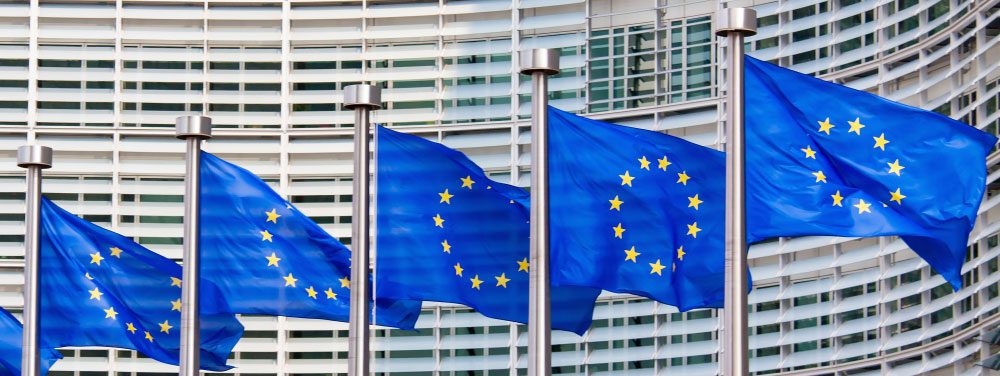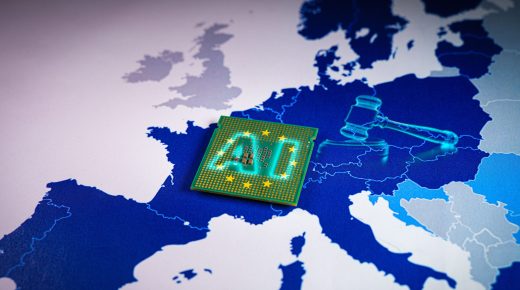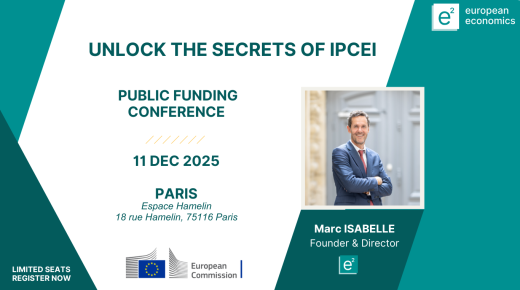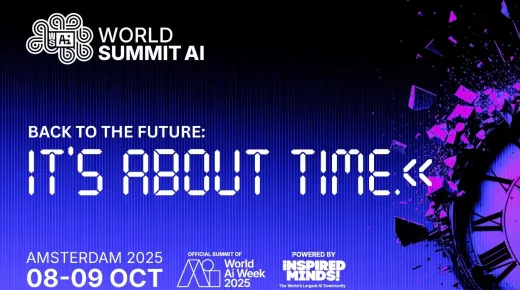
In a new era marked by intensifying geopolitical tensions and economic protectionism, amid intense competition across continents, the European Union (EU) finds itself at a strategic crossroads.
The world’s two largest economies, the United States and China, are heavily supporting key industries and technologies through State backed industrial policies such as the US Inflation Reduction Act and the Chips and Science Act, or China’s extensive subsidies in semiconductors and electric mobility. In contrast, the European Union remains vulnerable: it ranks third in terms of GDP, but it suffers from a fragmented internal market, heavy reliance on external suppliers, and a sluggish translation of R&D and innovation into commercial-scale production. This is reflected by the EU’s laggard position in critical sectors such as semiconductors, electric batteries, and green hydrogen, where it holds a marginal share of global production: Europe produces less than 10% of semiconductors, only 7% of electric batteries, and less than 1% of solar PV panels.
This strategic vulnerability extends beyond production volumes, commercialisation and market shares. The EU heavily depends on imports from non-EU countries for critical raw materials like lithium, gallium, germanium, and rare earth elements dominated by Asian suppliers. At the same time, EU companies face stricter environmental and labor regulations (an outcome of strong political orientations of the past decades), higher energy prices, and fragmented regulatory frameworks across Member States. These structural disadvantages make it nearly impossible for European firms to compete on price alone against foreign competitors benefiting from massive economies of scale, looser standards, and strong government support. They also highlight that no single European country can win the new economic battle alone: joining forces, pooling resources and coordinating efforts are of paramount importance.
Given this situation, the EU cannot afford to engage in a race to the bottom. Firstly, it must de-focus from the strong-rooted belief that perfect competition and global trade will best benefit EU consumers and workers – the disruption of global supply chains during the Covid-19 outbreak, the energy crisis that followed the war started by Russia on Ukraine, or the recent harassment by the Trump administration of global trade conditions that prevailed for decades prove it wrong. Conversely, the EU must embrace a renovated industrial strategy: one centered on resilience, technological leadership, and coordinated action. Its key objective should be reducing strategic dependencies, strengthening internal value chains, and building collective capacity to innovate and scale up domestically. In this framework only, the EU will be in a position to escape head-on price competition by differentiating its economy through innovation, quality, and sustainability. These are the key drivers of increased productivity, economic growth and a reinvigorated redistributive policy that lies at the core of the European economics and social model.
This is where the Important Projects of Common European Interest (IPCEIs) emerge as the EU’s most powerful and strategic industrial policy tool. IPCEIs are large-scale, collaborative crossborder projects supported by the EU and funded by the Member States that aim to foster innovation, sustainability, industrial competitiveness, technological sovereignty, resilience and infrastructure, especially in sectors deemed strategic to Europe’s future. They build up from the integration of dozens of R&D&I projects, emanating from companies selected in several Member States, and articulated across all steps in strategic value chains.
Their legal background is Article 107(3)(b) of the Treaty on the Functioning of the European Union (TFEU), which provides an exception to the EU’s general prohibition on State aid. Accordingly, IPCEI funding is regulated by the European Commission under competition law, pursuing the central objective of protecting and maximizing the welfare of EU consumers and citizens. This involves maintaining low prices, ensuring broad accessibility, fostering product quality and diversity, and encouraging innovation. Under IPCEI rules, Member States can support only projects that would not be undertaken by their promoters without State aid due to market failures, provided that they develop beyond global state-of-the-art technologies, and that participating companies don’t derive significant market power from their implementation.
Since their launch in 2018, 11 IPCEIs have been started and approved in sectors where the EU stakes are highest, including microelectronics, batteries, hydrogen, cloud computing, and health care. 22 Member States committed to fund these projects up to a total of 37.2 billion € grant distributed across 247 companies (Schmitz et al, 2024). These initiatives represent a key EU response to foreign subsidy programs and industrial strategies in China and the US, offering a distinct European approach to strengthening strategic autonomy and competitiveness.
Unlike other industrial policy instruments, IPCEIs are tailored to address the structural complexities and weaknesses of the EU’s internal market: an economic area composed of 27 Member States with diverse legal frameworks, languages, policy priorities and economic structures. They compel cooperation among at least four Member States and dozens of companies in the same industry, under the supervision of the European Commission. This helps promote legal, regulatory and market incentives alignment in areas such as intellectual property, licences and permitting, environmental compliance, norms and standards – and of course financing. This harmonisation results from months of upstream coordination work. It helps reduce bottlenecks and better integrate the fragmented internal market. Thus, IPCEIs contribute to address one of the core weaknesses of the EU industrial model noted by Mario Draghi in his 2024 report (Draghi, 2024): the inability to scale innovations due to disjointed policy environments.
IPCEIs also play a crucial role in countering global competitive imbalances in sectors like semiconductors, electric mobility and digital, where non-EU actors benefit from strong State support and less stringent regulatory environments. China, for instance, has gained a competitive edge through a combination of technological catch-up, massive scale, loose social and environmental regulations as well as substantial government subsidies, enabling its industries to remain profitable even amid market volatility (Bickenbach et al., 2024). This resulted in an uneven playing field, as EU companies must comply with more stringent environmental and safety standards, bear higher production costs, serve a smaller and less unified market base, and operate under a strict regulation on State aid. In this context, competing on prices can only be a losing game for EU companies.
By design, the IPCEI framework targets non-price competition, where EU companies can beat their Asian and American competitors. IPCEI participants are handpicked with special attention and they receive well targeted public funding to develop and first industrialise innovative products and services across strategic EU value chains through technological advancements beyond state-of-the-art. IPCEIs target the development of innovative ecosystems (and even sometimes their very creation, like for Li-ion batteries and green hydrogen) by encouraging collaborative R&D as well as EU-based interconnected ecosystems of suppliers, manufacturers, and service providers. Last but not least, they promote highly qualified jobs in the EU.
A concrete example can help illustrate how IPCEIs have been used in the past years to develop the EU’s industrial competitiveness and resilience.
Two IPCEIs on batteries were started in 2019 with the objective of developing a European battery supply chain. The electrification of the mobility and energy sectors will strongly develop in the coming decades to reduce the EU’s dependency on oil and gas – two raw energy sources that it is strongly lacking. Conversely, the European automotive industry is strong, while more than 80% of the global supply of battery cells come from China (60%), South Korea (18-20%) and Japan (5-6%). Add to the list that the battery pack is the single most expensive component of an electric vehicle (EV), typically accounting for 30-40% of the total cost of a standard EV. And you understand why it is of strategic relevance for the EU to develop and localise a European battery value chain, from the supply of critical raw materials such as lithium, cobalt, nickel, manganese, graphite, to that of advanced chemicals for cathode, electrolyte and anode, gigafactories for battery cell manufacturing, battery packs, battery systems, and finally recycling, repurposing and refining. Without such an integrated supply of batteries made in Europe, the EU could lose 30-40% of the value of car manufacturing in the future.
In the first IPCEI on Batteries, seven member states (Belgium, Finland, France, Germany, Italy, Poland and Sweden) committed to provide funding up to €3.2 billion for cross-border and collaborative R&D projects carried out by 17 companies, which agreed to closely cooperate with each other and with over 70 external partners, such as SMEs and public research organisations across Europe. A second IPCEI on Batteries (EuBatIn) was initiated some months later. A total of 42 companies from twelve member states (Austria, Belgium, Croatia, Finland, France, Germany, Greece, Italy, Poland, Slovakia, Spain and Sweden) are participating in this project, with a commitment of €2.9 billion in public support. The same collaborative ecosystem is involved between direct and indirect IPCEI participants. These two battery IPCEIs are fully launched and in mid‑implementation (completion expected in 2028 and 2031). Hence, it is too soon to assess their economic impact. However, the number of jobs directly or indirectly related to the EU battery chain has been steadily increasing from 2022 to 2025 and is projected to more than double by 2030.
The example of the IPCEIs on Batteries also reveal that beyond supporting competitiveness, IPCEIs are emerging as a powerful lever for advancing the EU’s green transition, aligning with Europe’s decarbonisation agenda – and creating highly qualified jobs in the EU at the same time. Most existing IPCEIs are indeed driving sustainable innovation, like Hy2Tech, Hy2Use, Hy2Move and Hy2Infra – four complementary IPCEIs to develop the European low-carbon hydrogen industry – as well as the two IPCEIs in the semiconductor industry, which have a strong focus on developing more energy-efficient chips as well as innovative wide-band gap chips for energy and automotive applications.
Looking ahead, the European Commission and the Member States, through their regular discussions within the Joint European Forum on IPCEI, are preparing to launch new IPCEIs starting in 2025. Five of them have been endorsed late 2024 and early 2025: Circular Advanced Materials for Clean Technologies, Continuum of federated and distributed Artificial Intelligence services, Deploying large-scale federated Edge computing infrastructure and services, Advanced Semiconductors Technologies and Innovative nuclear technologies. Three additional candidates are still under assessment in the fields of biotechnologies, clean, connected and autonomous vehicles and critical raw materials.
The JEF IPCEI also has the objective of increasing the effectiveness of the designing, assessment and implementation of IPCEI. One key expectation is that the new calls will further strengthen the role and the participation of SMEs in addition to large and well-established players, and of Local and Regional Authorities in support of central government bodies and agencies. Last but not least, the discussions in the JEF IPCEI underline the importance of EU co-financing of IPCEI projects for Member States in a context of restrained budgets.
In conclusion, IPCEIs are far more than just State aid instruments. They are a strategic compass for strengthening Europe’s industrial future and promoting the welfare of workers and consumers. By addressing fragmentation, enabling cross-border cooperation, and promoting innovation in areas of strategic importance, IPCEIs provide the EU with a uniquely tailored response to the aggressive industrial policies of competing economies. These initiatives reflect a strategic deployment of public funds to reinforce the EU’s technological sovereignty, economic competitiveness, and environmental sustainability in a rapidly evolving world – ultimately safeguarding and enhancing the well-being of its citizens and consumers.
References
- Bickenbach, F., Dohse, D., Langhammer, R. J., & Liu, W.-H. (2024). Foul play? On the scale and scope of industrial subsidies in China (Kiel Policy Brief No. 173). Kiel Institute for the World Economy.https://www.ifw-kiel.de/publications/foul-play-on-the-scale-and-scope-of-industrial-subsidies-in-china-32738/
- Draghi, M. (2024). The future of European competitiveness. Part A: A competitiveness strategy for Europe. European Commission. https://coilink.org/20.500.12592/9kbtlh
- European Union (2025). Experiences of regional authorities with the Important Projects of Common European Interest (IPCEI) and suggestions for improvement. https://www.t33.it/en/news/cor-418-ipcei.html
- Letta, E. (2024). Much more than a market: Speed, security, solidarity – Empowering the Single Market to deliver a sustainable future and prosperity for all EU citizens. Institut Jacques Delors. https://coilink.org/20.500.12592/vmcvm07
- Schmitz, L., Seidl, T., & Wuttke, T. (2025). The costs of conditionality: IPCEIs and the constrained politics of EU industrial policy. Competition & Change. https://doi.org/10.1177/10245294251320675


